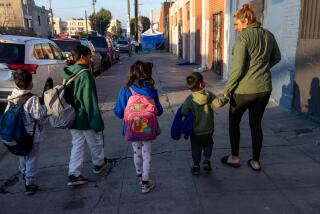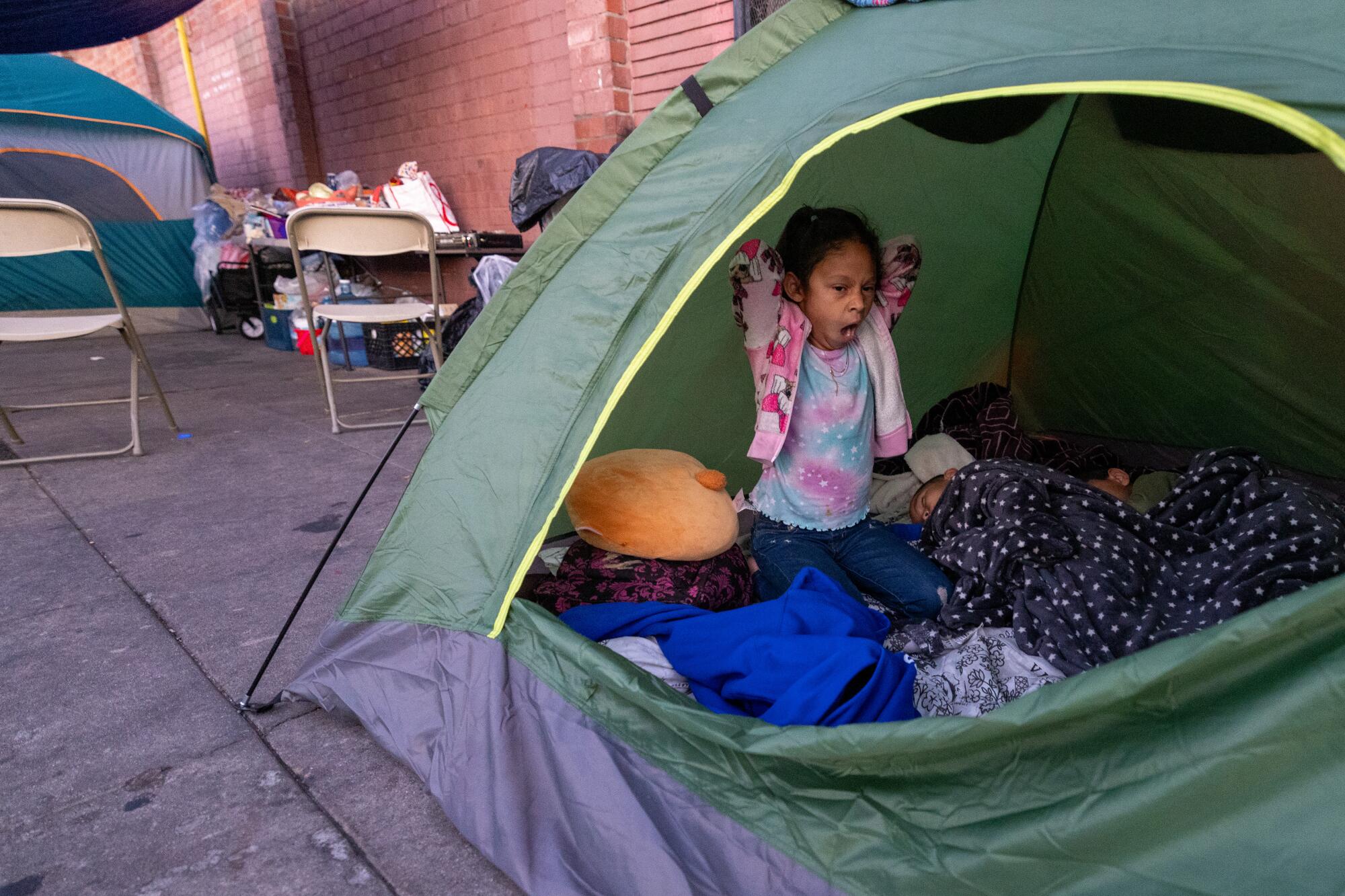
- Share via
When the big green sanitation trucks rumbled up, eight of the 10 children living in the Skid Row encampment were away at school, easing the stress on the four sets of parents as they stuffed their belongings into plastic bags and storage boxes and dismantled their tents.
Sanitation workers told them they couldn’t keep a canopy that sheltered their cooking area or the plastic pallets they used to keep their bedding off the cold concrete. Those minimal comforts were soon swallowed up by the trucks.
But they didn’t have time to stew over the loss. Nubia Reyes and Grecia Galecio had taken strawberries on consignment from a nearby broker and needed to sell them. They headed out, pushing their carts past the lines of tents, and blended into the souk-like clamor of Los Angeles Street, where vendors crowd the sidewalk barking their wares — fresh fruit, baseball caps, statuettes of the Virgin Mary.
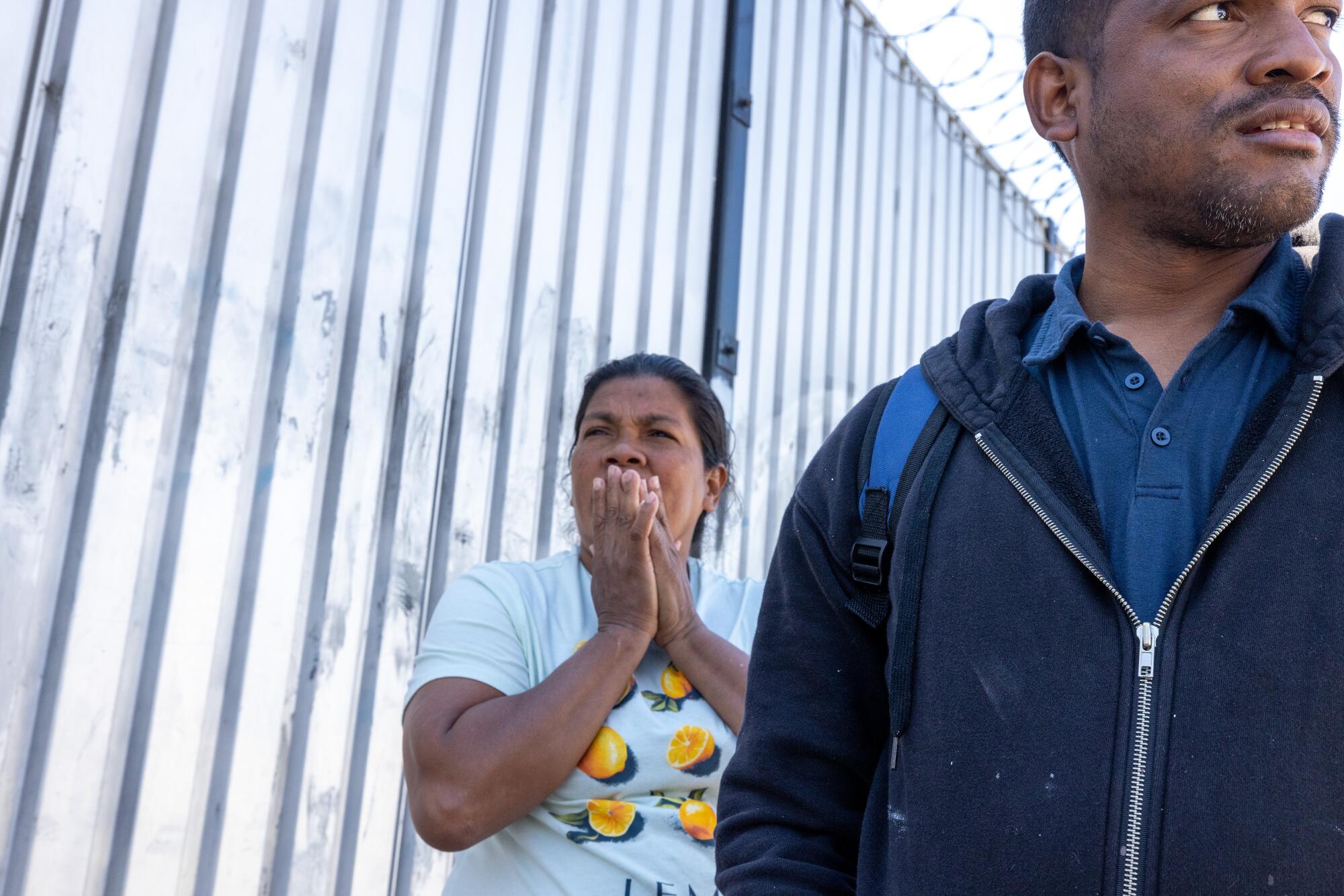
The four families arrived in the U.S. by air and bus from El Paso and San Antonio after crossing the Mexican border into Texas. They came from Nicaragua, Peru, Honduras and Venezuela with no connections to Los Angeles. They included a 22-year-old woman pregnant with twins and a single mother with three small children.
Their fare was paid by faith-based groups in Texas, and it was unclear whether the trips were related to Texas Gov. Greg Abbott’s campaign to send migrants on buses and planes to other states. A call to Catholic Charities in San Antonio, the organization one family identified as its sponsor, was not returned.
Skid Row, an intense environment with half-clothed people wandering aimlessly, open drug use and a pervasive stench, is universally judged an unfit place for children to live. But the new wave of migrants arriving from Texas has added to the strain on both public and private agencies working to prevent that.
The four families living communally on Skid Row became connected at Union Rescue Mission, two blocks away on San Pedro Street, where they stayed for 90 days until they were asked to pay rent.
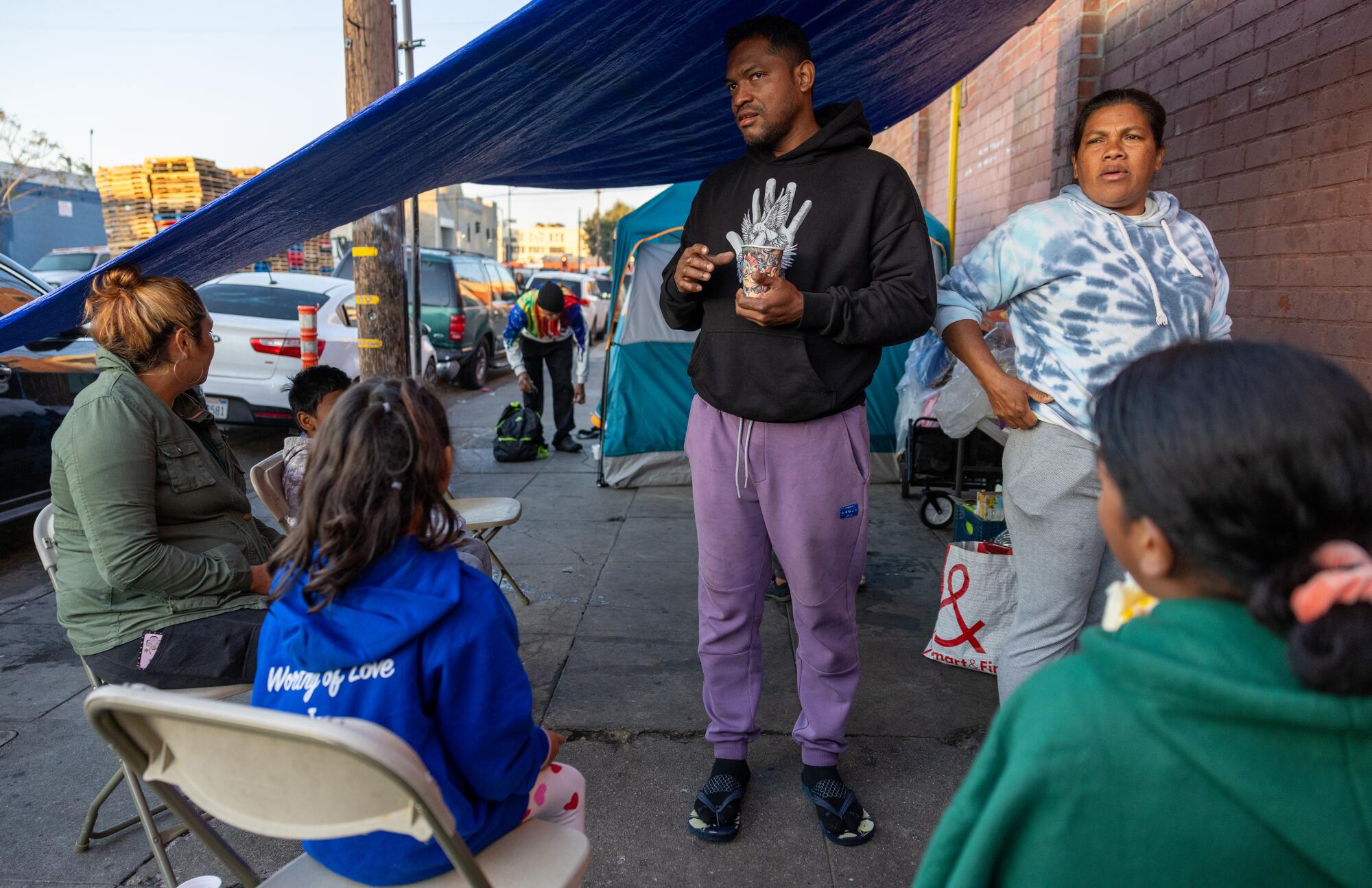
Since October, the mission has been overwhelmed by migrants, who mostly find their way there by word of mouth and now make up 75% of the 400 family members there, said Kitty Davis-Walker, vice president for public relations.
With donations declining since early last year, the privately funded mission in December decided that anyone staying beyond 90 days would have to help cover their costs by contributing 15% of their household income.
“Some choose to leave after the 90 days because they don’t want to pay a fee,” Davis-Walker said in an email.
After a journey from Nicaragua, Kesly Poveda Sr.; his wife, Venancia Apiñas; and their three youngest children arrived at Los Angeles International Airport in November with instructions from the San Antonio church that paid their fare to catch an Uber to the mission. When their 90 days expired, paying the fee was not an option. He and his wife have no legal right to work.
Families leaving the mission gravitated to a spot across the street from a homeless facility where they could use the showers and laundry machines.
Since living on the street, Apiñas and her husband were injured when a man with a stick attacked them over their spot.
“The one thing that we at least don’t have to worry about is food,” Apiñas said. “We get plenty of that.”
That small change is already an improvement from their life back in Nicaragua. There they lived off the land by fishing and farming. There were days, she said, that her family wouldn’t have anything to eat until dinner.
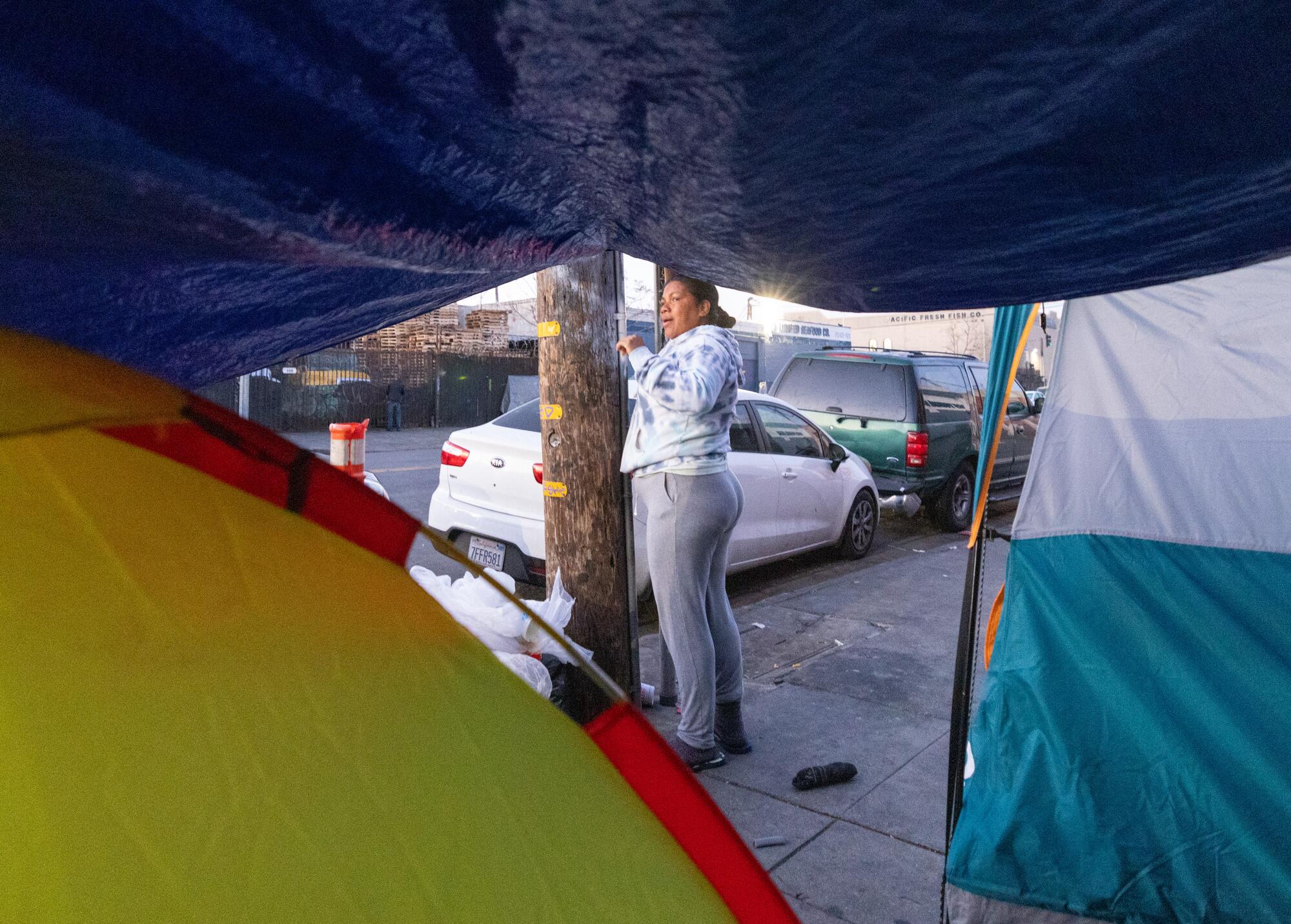
This week she got a call from her sister asking whether she had any money to send back home. She was low on clothes and food. The thought of it made Apiñas cry.
“She doesn’t know my situation,” she said. “I didn’t want her worrying about it.”
Apiñas and her family are part of a mass exodus of the Miskito Indigenous community, descendants of Indigenous people, Europeans and Africans. It is the first significant escalation of Miskito migration to the U.S. since the Nicaraguan civil war of the 1980s.
They departed from the wooden hut they shared with a relative in Puerto Cabezas, Nicaragua, in October, two weeks after the government jailed Brooklyn Rivera, an advocate and elected representative of the Miskito nations.
Apiñas said there are times she feels the journey was all for naught.
“This is not what I wanted my kids to experience,” she said. “Sometimes they would ask me why I brought them here. You hear people screaming, fighting, throwing bottles on the ground.”
Three days ago, her daughter Valentina, 9, woke up when she heard a man screaming. “I held her in my arms and told her everything was going to be fine.”

The story of these Skid Row migrant families found its way into U.S. District Court on Monday when Judge David O. Carter displayed photos of them to participants in the L.A. Alliance for Human Rights lawsuit alleging that the city and county are failing their duty to care for homeless people.
Carter had visited the families Sunday after being tipped off by Kevin Call, one of several Skid Row watchers the judge cultivates as his eyes and ears on the street.
What “drove me down was Kevin and a lot of the community calling and saying, ‘We’ve got a lot of kids down here, Judge. They’re coming in from Texas, they’re coming in on buses.’ ”
The community has little faith in the effectiveness of the Los Angeles Homeless Services Authority, Carter said.
“When I’m asking, ‘How’s LAHSA doing?’ the community points out to me, ‘Well, there goes a LAHSA car,’ ” he said. “I said, ‘What are they doing?’ ... Basically everybody breaks out in laughter and says they’re not stopping, they’re doing nothing.”
Three LAHSA outreach workers came to talk to the families Tuesday morning while The Times was at the scene. After they left, Apiñas said they offered to look for a shelter that would take them, but said the women and children would have to go to one and the husbands and adult sons would go to another.
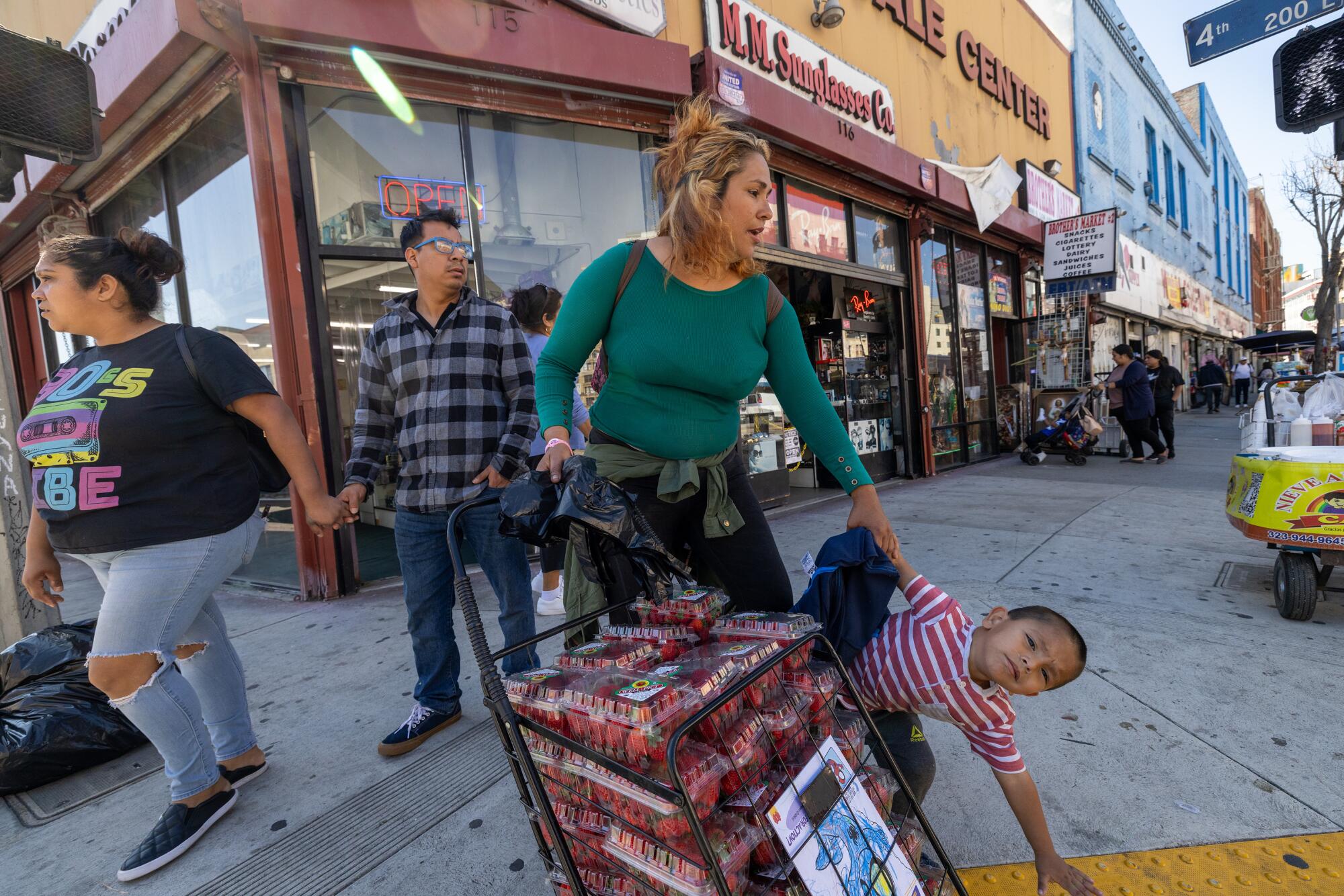
In a statement Tuesday, LAHSA said: “Due to the high demand for shelter, outreach teams sometimes refer families to crisis programs to provide more immediate help.”
An all-female shelter in Skid Row has rooms for families without adult males, it said. “It is possible for a team to refer a family there, due to the demand for Family Solutions Centers, with the agreement of the family.”
Many migrant families have been placed in housing through the Every Woman Housed program.
“We are currently waiting to hear from the property management team there to see if we can utilize more of their units,” the statement said.
As day broke Wednesday, only two tents remained. Apiñas and Poveda stayed with their four children, including Kesly Jr., 20, who had preceded them to the U.S. and joined them after living in a friend’s closet for a year. Reyes, who had returned from her day’s work with unsold strawberries and a disappointing $30 profit, also remained in a pup tent with her three children, ages 2, 3 and 7, resigned to the harshness of the street.
“You have this rosy picture of life here in the U.S., but then you show up and see all this and it’s not anything you thought it would be,” Reyes said. “It’s awful.”
The two other families, including the pregnant mother, had gone to a shelter. Apiñas said she thought they had returned to the Union Rescue Mission, but wasn’t sure.
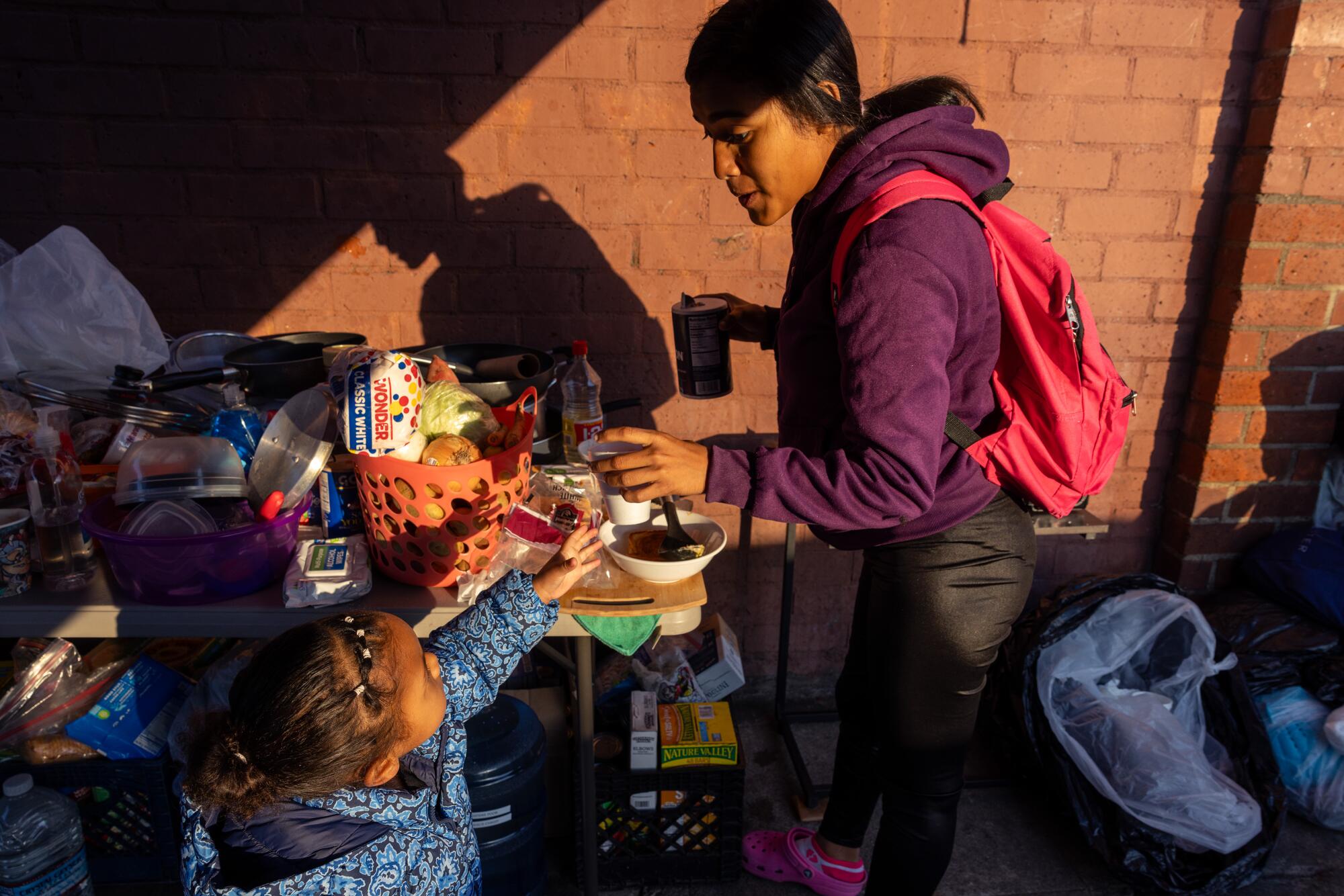
Beneath a tarp sunshade, Apiñas began cooking eggs and toasting bread while the children used water from a bucket to wash their face and brush their teeth. Kesly Poveda Sr. took the kids across to use the restroom one by one. Per the facility’s rules, minors are not allowed to go by themselves.
Nearby Reyes washed pots and pans with the same bucket of water. By 7:30 a.m. as the sun continued to rise, Reyes and the kids headed to a nearby bus stop.
As Apiñas watched them leave, she yelled out to her children. “Que dios los bendiga,” she said. May God bless you.
(Hours after a version of this story was posted online Thursday morning, LAHSA moved 15 Skid Row families into hotels, including the people in the story, a spokesperson said.)
More to Read
Sign up for Essential California
The most important California stories and recommendations in your inbox every morning.
You may occasionally receive promotional content from the Los Angeles Times.

